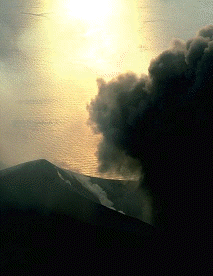This is an image of the eruption of Stromboli volcano.
Click on image for full size
Image from: Dr. J. Alean, Eglisau, Switzerland
For more information, images and video about Stromboli volcano see Stromboli On-Line.
Volcanism
Volcanoes bring material from the deep interior of a planet and spilling it onto the surface. Eruptions of volcanoes also put new molecules into the atmosphere. Volcanism is part of the process by which a planet cools off.
Even though they are not volcanoes, geysers are also part of the volcanic process, involving water.
There are several ways in which a volcano forms, just as there are several different kindsof volcanoes.
There are quite a few other planets which have volcanoes on the surface, including Venus, Mars, and Jupiter's moon Io. Other planets seem to have had volcanic activity in the past. These include Mercury, the Earth's Moon, Jupiter's moon Europa, and perhaps Neptune's moon Triton.
You might also be interested in:

What types of instructional experiences help K-8 students learn science with understanding? What do science educators teachers, teacher leaders, science specialists, professional development staff, curriculum designers, school administrators need to know to create and support such experiences?
...more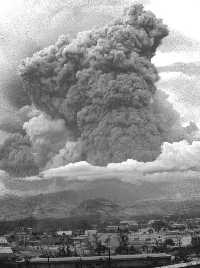
Volcanic eruptions come in many different forms. Some eruptions only contain lava and hot gas. These lavas move slowly, at walking speed or slower. Other eruptions contain lava accompanied by clouds of
...more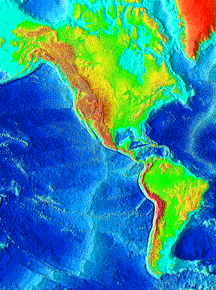
A Planet or a moon cools off slowly in time, just like the sidewalk cools off in the evening after a sunny day. The warmth contained inside a planet or moon controls what sort of activity the planet or
...more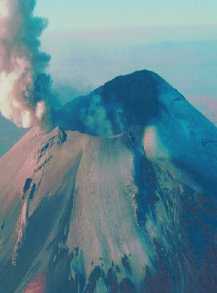
There are several ways in which a volcano can form, just as there are several different kinds of volcanoes. Many of the volcanoes on the Earth's surface are part of the "Pacific Rim of Fire". During the
...more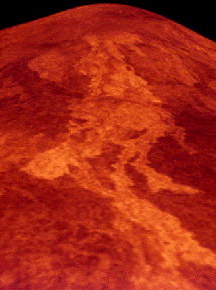
Venus has a number of shield volcanoes such as those found on Earth. Two of the big volcanoes of Venus are Sif Mons (shown here with a lava plain) and Sacajawea. Sif is named after a Nordic goddess and
...more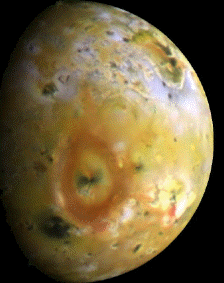
Unlike the other moons of Jupiter, Io is not made of ice. In fact, the surface of Io is rocky with many volcanoes. The volcanoes pour out lava of sulfur from the inside of Io. The surface of Io can be
...more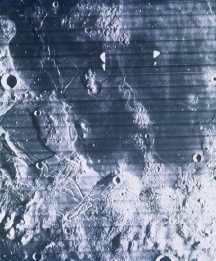
This picture of the lunar maria shows the difference betwen the highlands, which are heavily cratered, and the dark maria which are relatively smooth with few craters. The absence of craters indicates
...more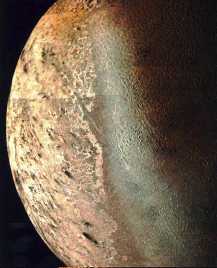
This image of Triton reveals many neat features of its surface. The surface of Triton's surface is a mix of Ganymede's and Europa's surfaces. Old areas of Triton's surface have many craters and younger
...more


